
Japanese anemones: 8 ideas for successful combinations
Romantic and natural
Contents
Magnificent as a background or centrepiece in a border, the Japanese anemone (Anemone hupehensis) easily integrates into all autumn scenes. White or pink, with its romantic appearance, this perennial adds charm to English cottage gardens, mixed borders, and vicarage gardens.
It is also very trendy in contemporary meadow gardens, paired with grasses. Its upright habit will bring lightness to more orderly borders. Slender and delicate, it flourishes in various styles of borders, undeniably adding elegance and poetry.
It can be found in fresh and romantic white/pink combinations with roses and other late-flowering perennials. It is one of the focal points of shade gardens, bringing light and contrast, as well as white gardens. It may be best to avoid pairing it with overly contrasting colours to prevent discord, as its simple charm calls for soft harmonies or a unity of shades.
Staging the Japanese anemones is extremely simple to achieve as long as you give them enough space.
Illuminate a dark flowerbed
The Japanese Anemone will bring contrast, colour, and light to a somewhat dull semi-shaded border until the first frosts. It is therefore best placed at the centre or back of the border, mixed with broad and linear foliage. It thus surrounds itself with its companion plants of the shade, such as ferns, hostas, or Brunneras. Its abundant flowering will provide a lovely brightness to these rather sad areas at this time of year. The lightness of its stems will help to air out a border that is too dense. Prefer white varieties to subtly illuminate this environment of foliage.

An example of a semi-shaded association: Anemone japonica ‘Dreaming Swan’, Persicaria virginiana ‘Painter’s Palette’, Lamium maculatum ‘White Nancy’, under the cover of a Fatsia japonica.
Read also
Japanese anemones: planting and careAdd lightness to a mixed border
Japanese anemone is a must-have for English cottage mixed borders, bringing subtlety and elegance. Plant climbing roses or a hedge of hydrangeas in the background; they will create a happy marriage with Japanese anemones. These elegant plants with an airy habit need a community that will showcase them. The large size of these perennials allows them to fit into often tricky spots. This is the case for the back of borders under large trees. The shorter varieties will be better suited for narrow beds. Mixed with Astrances, hardy geraniums, Asters, autumn daisies, Astilbes, Gauras, and sages, the varieties ‘Andrea Atkinson’ or ‘Whirlwind’ are excellent assets for late-season in this style of densely planted border.
Discover other Japanese Anemones
View all →Available in 0 sizes
Available in 0 sizes
Available in 0 sizes
Available in 1 sizes
Available in 3 sizes
Available in 3 sizes
Available in 1 sizes
Available in 1 sizes
Available in 4 sizes
Available in 1 sizes
Make the pink rise!
Announce the autumn hues! Dare to create a striking combination by pairing a Japanese anemone with semi-double dark pink flowers (‘Rubra Plena’ or ‘Prinz Heinrich’) with the flower spikes of a Cape fuchsia with vermilion or purple flowers, or the brilliantly coloured leaves of a European spindle tree. Alongside pink chrysanthemums, asters, hydrangeas in stunning shades, a magenta pink Chinese Astilbe, a lilac-flowered Astrance, or a Miscanthus sinensis Purpurascens ‘Eulalie’ or the violet umbels of a Buenos Aires verbena, they will herald the Indian summer. Grey foliage (wormwoods, Senecio leucostachys…) provides a softness of tones that harmonises beautifully with the entire range of pink hues. Pink Japanese anemones are also the perfect companions for late-flowering roses such as China roses and musk hybrids, beneath which they create romantic late summer scenes.
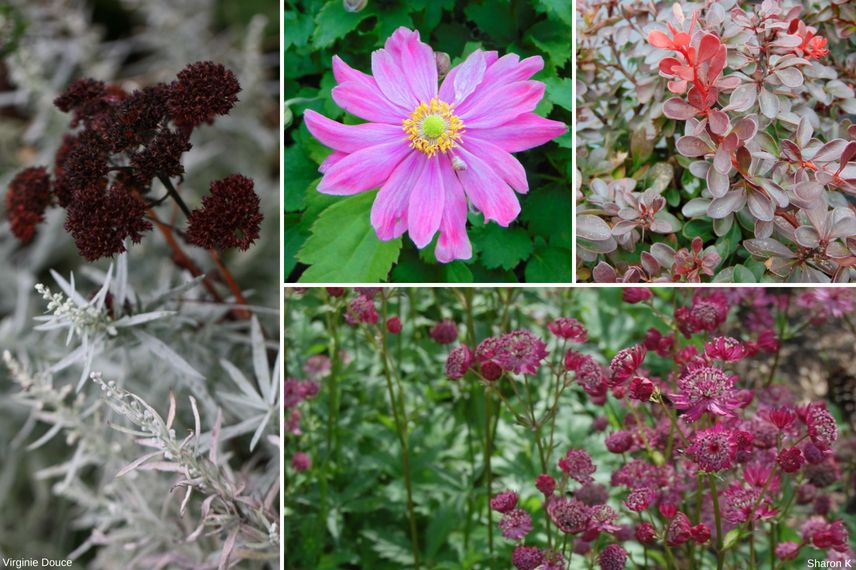
An idea for a combination of pink, purple, and silver shades: Anemone japonica ‘Prinz Heinrich’, Berberis thunbergii ‘Atropurpurea Nana’, Astrantia major ‘Lars’, Sedum ‘Jose Aubergine’ and Artemisia ludoviciana ‘Silver Queen’.
With glaucous foliage
Whether pink or white, the flowers of Japanese anemones harmoniously combine with the metallic shades of foliages in various shades of green. Dark greens (Fern, Hosta, Alchemilla, grasses, Persicaria…), grey-green-bluish (Lamium, Eryngium giganteum) or grey (wormwoods, senecio, lamiers…) will create a perfect backdrop to highlight their delicate tones.
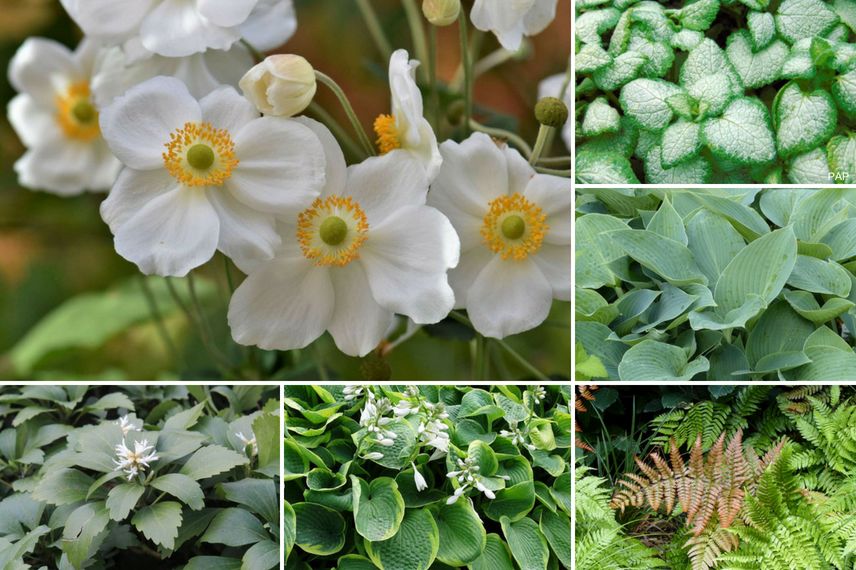
An example of pairing with foliage: Anemone japonica ‘Honorine Jobert’, Lamium maculatum ‘White Nancy’, Hosta tardiana ‘Halcyon’, Dryopteris erythrosora, Hosta sieboldiana ‘Frances Williams’, Pachysandra terminalis.
With grasses
On a grass base (Pennisetum, Stipa…) that forms the structure of the bed, insert patches of slightly muted colours with large-growing perennials, each in large quantities. Next to them, planted in threes or sixes, white or pink Japanese anemones create beautiful country harmonies. Let the elegant white flowers of ‘Honorine Jobert’ rise above the spherical faded inflorescences of an Allium cristophii or the pink ones of a ‘Little Princess’ anemone contrast with the striped leaves of a Miscanthus or with the thorny flowers of Echinacea.
A pure touch in a zen garden
The dominant colour in Japanese gardens is green, a myriad of greens but a palette insufficient for Western sensibility. For us, gardens are primarily about flowers. In a Japanese-inspired flowerbed, the rarity of flowering creates a seasonal event. Opt for varieties of white anemones, with the elegantly simple ‘Honorine Jobert’ or ‘Andrea Atkison’ to bring this pure and graphic note against a backdrop composed of various shades of green, from the variegated green foliage edged in cream of Euonymus or an autumn camellia that will bloom when the first frosts have taken away the last flowers of the anemones.
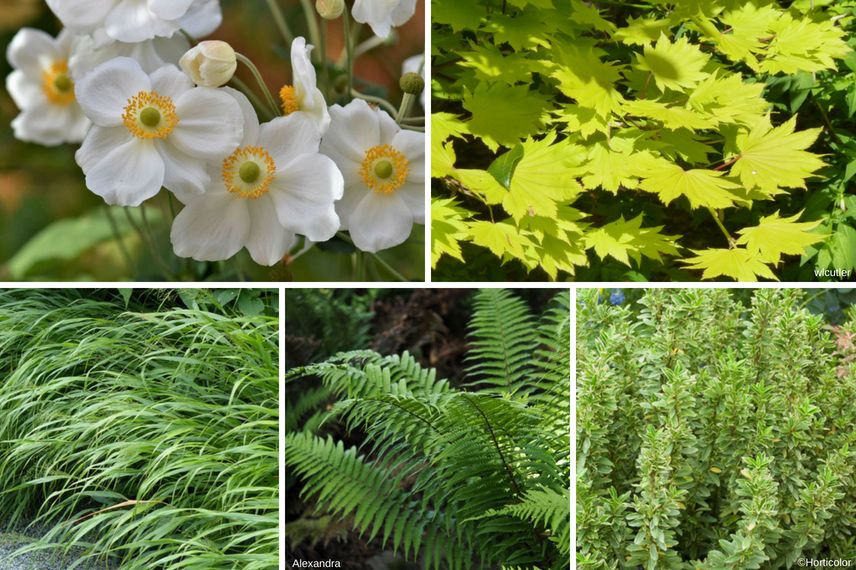
An example of a Japanese-inspired association: Anemone japonica ‘Honorine Jobert’, Hakonechloa macra, Dryopteris wallichiana and some Euonymus japonicus ‘Microphyllus Albovariegatus’, under the cover of a Acer shirasawanum ‘Aureum’.
With other autumn flowering perennials
To avoid a mass that is too naked in autumn, combine Japanese anemones with other late-flowering perennial plants, whose foliage develops during summer, extending from late September until the frosts: Asters, Echinacea, Stonecrops (or Sedums) and large autumn daisies, Salvias, Chrysanthemums, Cyclamens, Eupatorium perfoliate… which have the particularity of still flowering at this time of year.
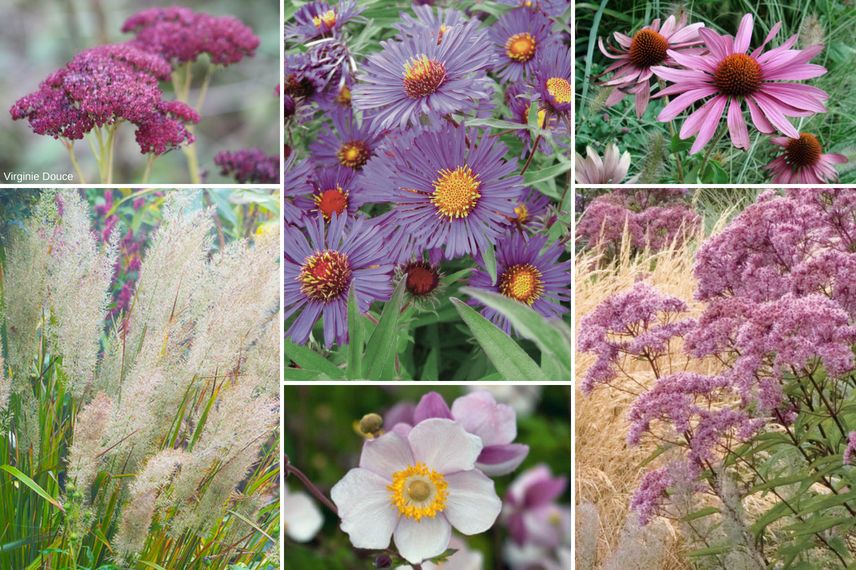
An example of an autumn combination: Sedum spectabilis ‘Herbstfreude’, Aster novae-angliae ‘Violetta’, Echinacea purpurea, Calamagrostis brachytricha, Anemone japonica ‘Hadspen Abundance’, Eupatorium purpureum and Calamagrostis acutiflora ‘Karl Foerster’.
In a pot on a shaded terrace
Are you looking for a plant that will bloom on your terrace in autumn? The Japanese anemone also thrives in pots, adding elegance to your outdoor space with its immaculate white or pale pink flowers. Opt for smaller varieties such as the Anemone Fantasy Cinderella. In large containers, you can pair it with grasses, for example, like Stipas, as well as hardy geraniums, Dahlias, Asters, and Phlox.
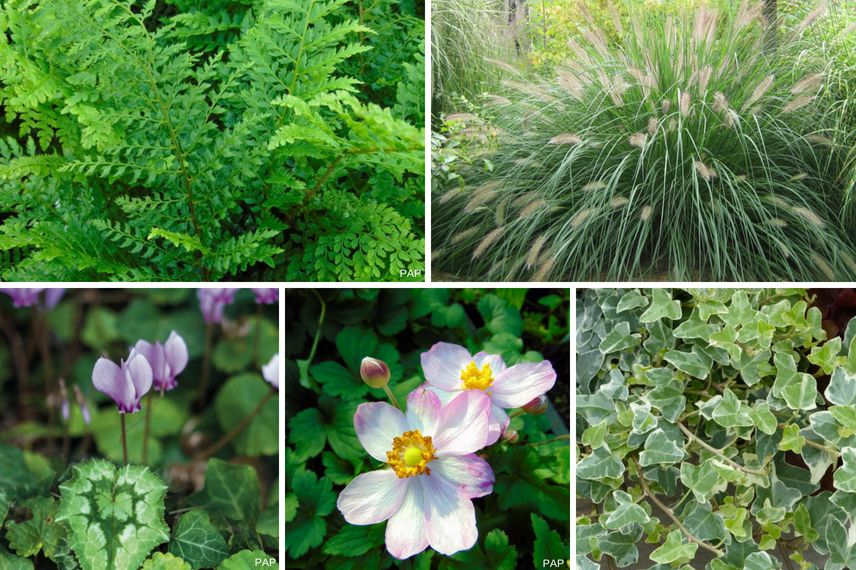
An example of a combination in a large pot: Polystichum setiferum ‘Proliferum’, Pennisetum alopecuroides ‘Gelbstiel’, Cyclamen hederifolium, Anemone japonica ‘Fantasy Cinderella’ and Hedera helix ‘Mini Ester’ cascading over the pot.
To go further
- Discover our 5 favourite varieties of Japanese anemones with double flowers
- Subscribe!
- Contents































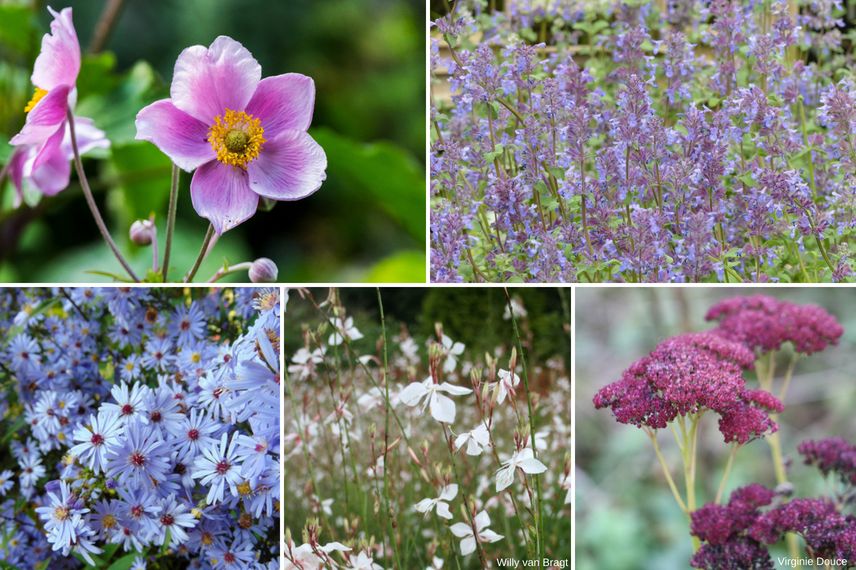
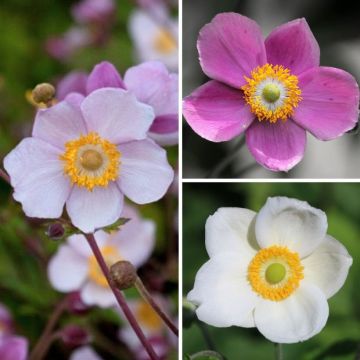
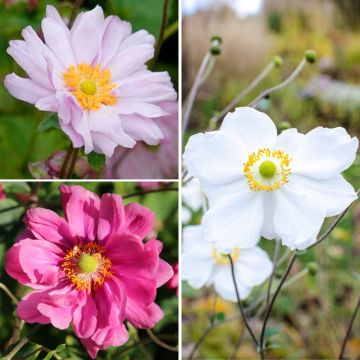
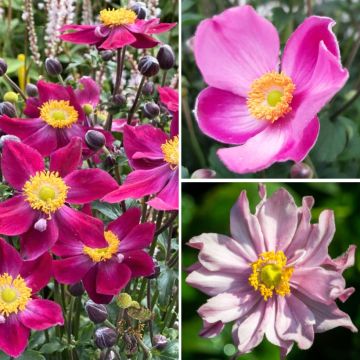
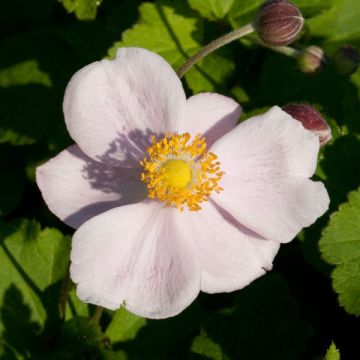
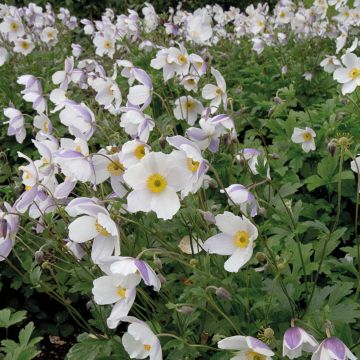
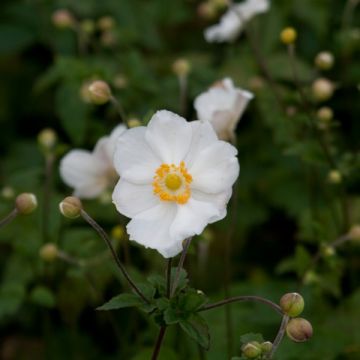
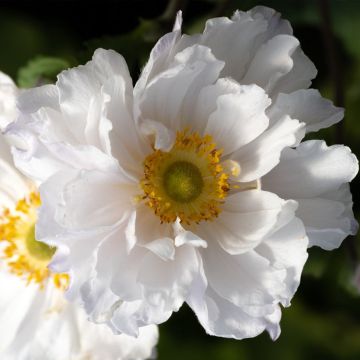
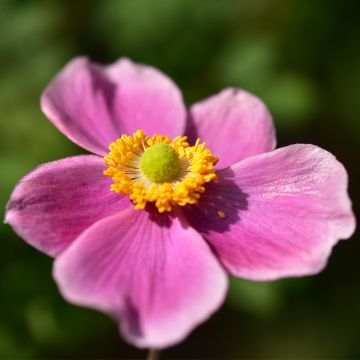
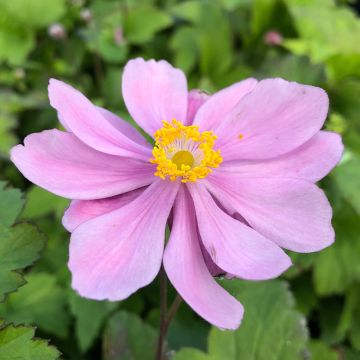
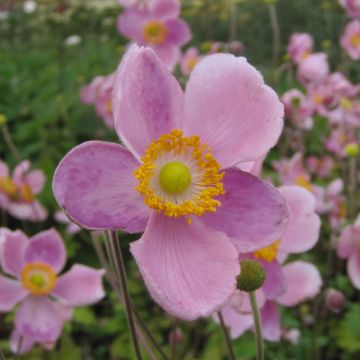
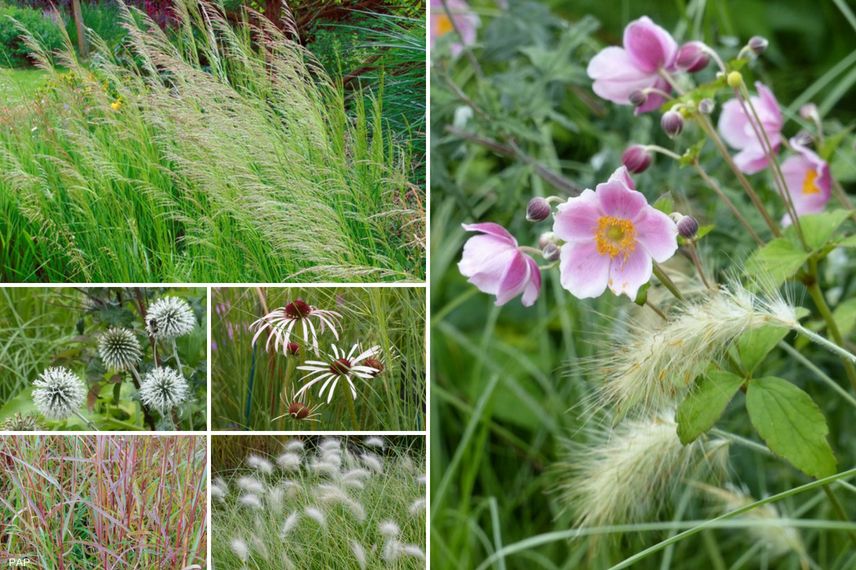
Comments